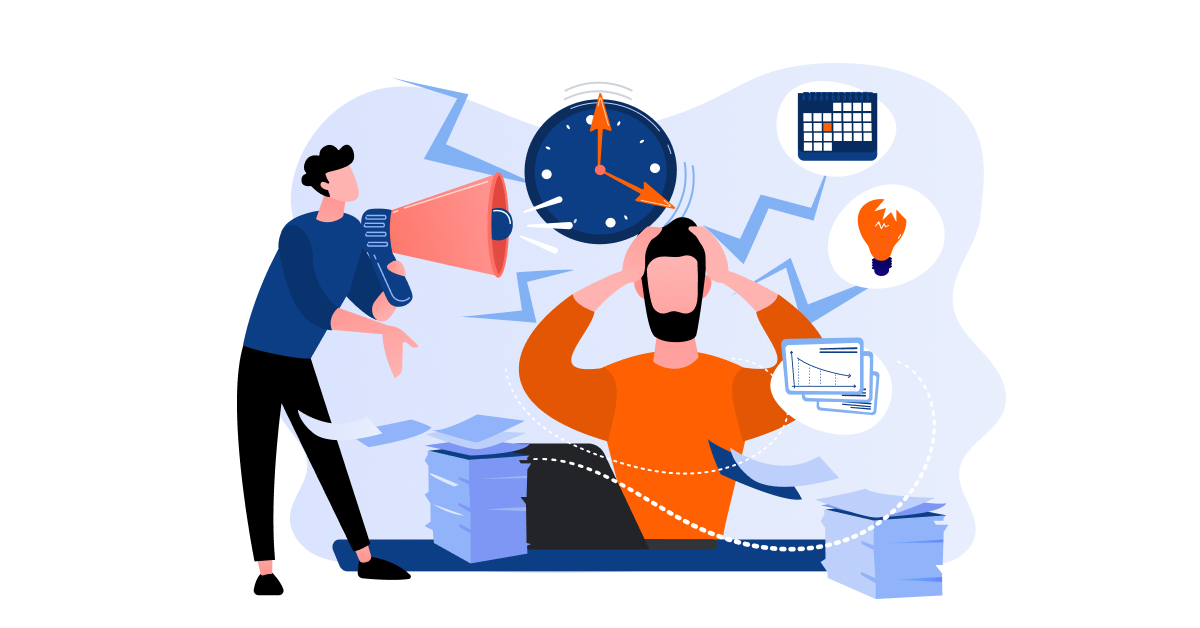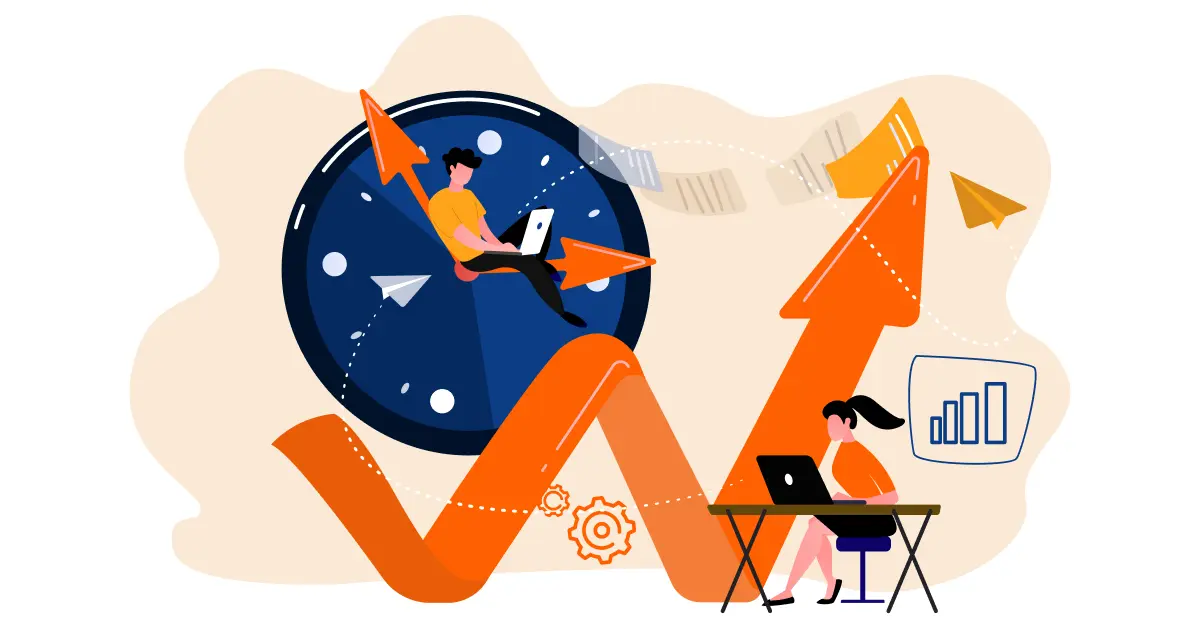
In today’s fast-paced workplace, people may need help focusing and working. Common workplace distractions may hurt employee productivity and workforce management. According to a survey, 80% of people admitted that chatty co-workers and office noise are the top distractions in the workplace.
Understanding these distractions and developing a plan to counter them are necessary to maintain employee engagement and productivity. In this article, we’ll look at seven typical office distractions and provide doable fixes to help you overcome them. We’ll also discuss how Leapmax and other technologies may help with successful distraction management.
Table of contents
Problem-Solution Analysis of 7 Common Office Distractions
1. Digital Distractions
Problem
Notifications, social media, and texts may be constantly stopped because more and more people use computers and smartphones. As of 2024, the typical worker spends 143 minutes daily on social media and other office distractions. Employee Monitoring Tool can help understand whether employees are working properly or not.
Solution
A digital detox during work hours may reduce digital distractions. Encourage staff members to designate certain hours for social media and email checks. Use time-tracking software to measure and manage the time spent on websites unrelated to work. Targeted interventions may be made possible by analyzing employee behavior and identifying trends that result in digital distractions via employee monitoring solutions like Leapmax.
2. Noise Pollution
Problem
Although they encourage teamwork, open-plan workplaces can result in higher noise levels. Workers may find it challenging to focus, which might lower output and raise stress levels. Noise pollution in open-plan offices can also increase fatigue and reduced job satisfaction, impacting overall employee well-being.
Solution
Consider offering noise-canceling headphones or designating certain quiet areas in the workplace to reduce noise pollution. Staggering work hours by implementing an 8-hour shift pattern may help minimize noise by limiting the number of workers present at any one moment. Encouragement of digital communication among staff members, such as chat apps, may also aid in the reduction of excessive noise.
3. Unscheduled Meetings and Interruptions
Problem
Organized meetings and colleague interruptions help productivity and concentration. Research by Atlassian indicated that meetings squander 31 hours per month. Unscheduled meetings and frequent interruptions can disrupt employees’ workflow, making it difficult for them to maintain momentum on essential tasks. This constant disruption decreases efficiency, leading to frustration and diminished morale.
Solution
Promoting the use of shared calendars and cultivating a work culture of frequent meetings may aid employees in effectively planning their workdays. Establish set times for team meetings and promote open avenues of communication, such as instant messaging applications, to prevent needless disruptions by asking brief queries that don’t need a formal meeting.
4. Cluttered Workspaces
Problem
If employee workstations are congested and unorganized, they may find it challenging to concentrate on their jobs and be subject to office distractions. Clutter may also lower productivity and cause stress. A cluttered environment can also hinder creativity and problem-solving, as employees may struggle to find the tools and information they need to complete their tasks efficiently.
Solution
Encourage staff members to keep their workspaces tidy and well-organized. This can help avoid disruptions at the workplace. Establish procedures that encourage regular desk cleanups and provide desk organizers and file systems as examples of organizing tools. Two benefits of maintaining a neat and welcoming workspace are reducing office distractions and improving employee performance.
5. Personal Issues and Stress
Problem
Stress and personal problems may divert workers from their jobs and impair their focus, resulting in more absenteeism and worse productivity. Personal issues and stress can also lead to increased errors and decreased job satisfaction, affecting individual and team dynamics. Chronic stress may contribute to burnout, leading to long-term negative effects on employees’ mental and physical health.
Solution
Provide workers with tools and support services to assist them in dealing with personal problems and stress. If employees can set their hours and get mental health care, balancing their jobs and home lives may be more accessible. This may make them more satisfied and increase their efficiency. Making the workplace more caring and helpful may also get people involved and improve workplace productivity.
6. Multitasking
Problem
Although multitasking is sometimes seen as a strength, it might result in less productivity and more mistakes. Employees who attempt to multitask may need help to finish any of them successfully. There are ways of utilizing an 8-hour shift schedule when multi-tasking. Multitasking can also increase cognitive load and stress, leading to mental fatigue and decreased job performance.
Solution
Urge staff members to concentrate on one job at a time and prioritize their responsibilities. Use time management techniques, such as the Pomodoro Technique, to divide work into concentrated periods with few pauses in between. Using time-monitoring tools, employees may measure their productivity and pinpoint places where multitasking adversely affects their jobs. Overcoming common workplace disruptions can be simple.
7. Lack of Employee Engagement
Problem
Employee disengagement increases the likelihood of being distracted and producing less work. If employees are interested in their work, staying inspired and on task might be more accessible. A lack of engagement can also result in higher turnover rates, as disengaged employees are more likely to seek fulfillment and opportunities elsewhere.
Solution
Encourage workplace participation by offering professional development, rewarding achievements, and encouraging open communication. Workforce analytics solutions may analyze employee engagement and identify opportunities for improvement. Regularly asking for employee input may also assist in addressing any underlying problems that could be causing disengagement. All of this can help reduce office distractions.
Leveraging Technology to Overcome Distractions
Technology may be a potent ally in combating office distractions in the current digital era. Platforms such as Leapmax provide comprehensive solutions for keeping track of staff engagement and productivity. Organizations may learn more about employee behavior analytics and pinpoint locations where office distractions are most common using an employee monitoring software. Using this data, workforce management may be enhanced overall, and tailored actions may be implemented.
Workforce analytics tools and time-tracking systems may also help identify patterns and areas for development by showing how employees spend their time. These methods help avoid employees’ distractions at work, enhancing employee efficiency and productivity by creating a more focused and productive workplace.
Conclusion
Office distractions are prevalent and diminishes employee engagement and productivity. Through comprehension and resolution of these interruptions, establishments may establish a work atmosphere that is more concentrated and efficient. Implementing practical solutions, such as lowering digital office distractions, reducing noise pollution, and promoting employee involvement, can help avoid common workplace interruptions.
Utilizing technology like Leapmax may also provide businesses with insightful data on worker productivity and behavior, enabling them to manage their staff better and make focused interventions. Organizations may increase employee productivity and engagement by proactively reducing workplace disruptions and creating a more effective and efficient workplace.






